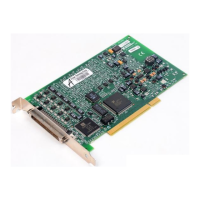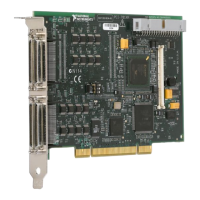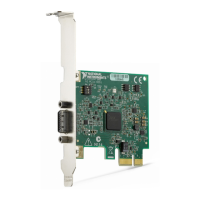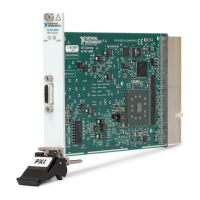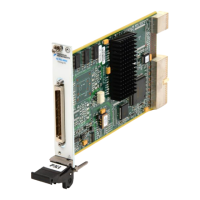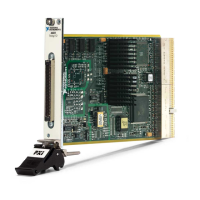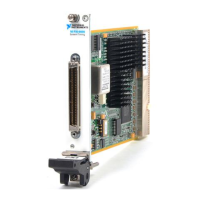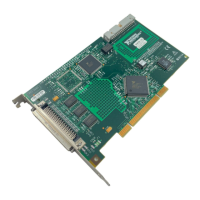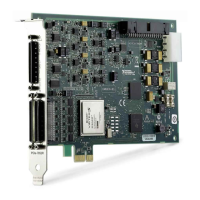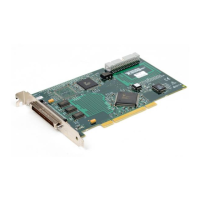Chapter 3 Signal Connections
NI 660x User Manual 3-16 ni.com
You can perform these measurements through programmed I/O, interrupt,
or DMA data transfer mechanisms. The measurements can be finite or
continuous in duration. Some of the applications also use start triggers,
pause triggers, and hardware arm triggers.
Note For more information about programming counter applications and triggers in
software, refer to the NI-DAQmx Help, and/or use the examples that are available with
NI-DAQmx.
Real-Time System Integration Bus
TIO devices use the National Instruments Real-Time System Integration
(RTSI) bus to easily synchronize several measurement functions to a
common trigger or timing event. In a PCI system, the RTSI bus consists of
the RTSI bus interface and a ribbon cable. The bus can route timing and
trigger signals between several functions on as many as five DAQ devices
in the computer. In a PXI system, the RTSI bus consists of the RTSI bus
interface and the PXI trigger signals on the PXI backplane. This bus can
route timing and trigger signals between several functions on as many as
seven DAQ devices in the system. For a RTSI connector pinout, go to
ni.com/info and enter rtsipin.
RTSI Triggers
TIO devices require a frequency timebase for its operation. This frequency
timebase must come from the onboard crystal oscillator and is required
even if the device is receiving a MasterTimebase signal from the RTSI
trigger bus. Any TIO device can drive its 20MHzTimebase signal onto the
RTSI Trigger 7 pin. Although some TIO devices have a 80MHzTimebase
(such as the NI 6602), the RTSI bus cannot carry the 80MHzTimebase
signal for bandwidth reasons. By default, TIO devices do not drive the
RTSI Trigger 7 bus clock line.

